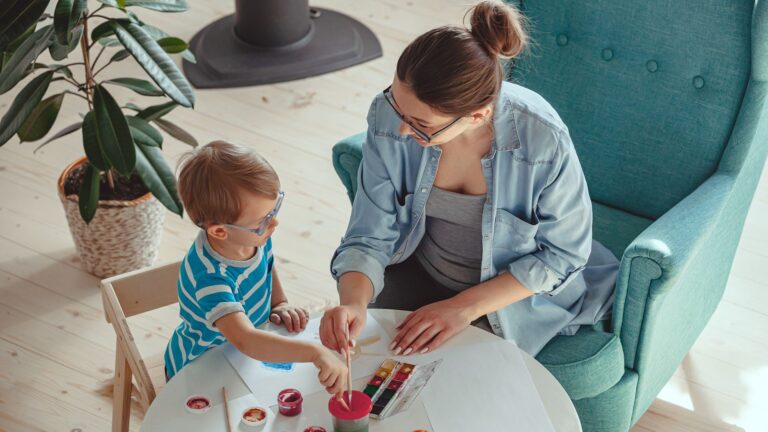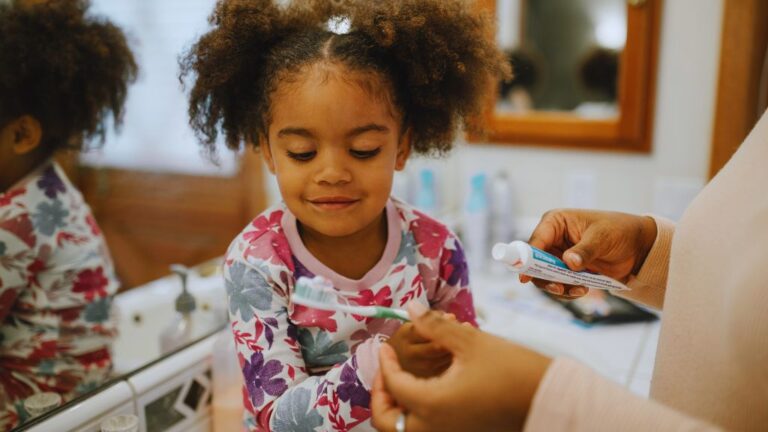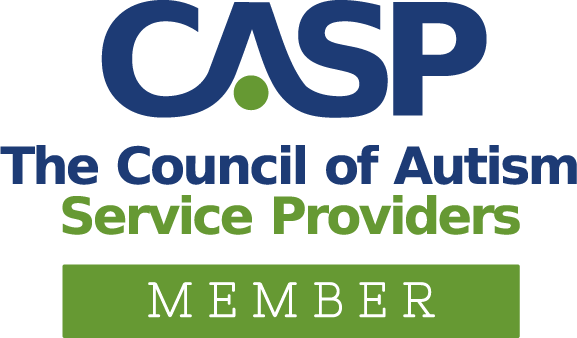Pairing in ABA therapy, or Applied Behavior Analysis, refers to building a positive relationship between ABA providers and their clients by delivering highly preferred reinforcement, such as a client’s favorite activities, communication, or interests, according to Behavior Analysis in Practice, to promote better outcomes in ABA therapy and life.
ABA therapy is a scientifically based approach to modifying behavior and teaching new skills to individuals with autism spectrum disorder (ASD). A significant component of ABA focuses on understanding and replacing maladaptive behavior to improve daily functioning and quality of life so neurodivergent clients can participate in more opportunities and engage in what’s truly rewarding.
ABA is highly individualized, meaning treatment plans meet each person’s unique needs and goals and don’t include unnecessary trials or route learning. The positive relationship between ABA providers and clients is critical to optimizing engagement during treatment, making it essential the bond is rooted in integrity and mutual respect to make clinical gains.
For children or teens with ASD who have difficulty forming relationships due to social barriers, the caregiver, ABA providers, and, in some cases, the client must understand how pairing works to ensure its functioning appropriately and that ABA sessions are conducive to healthy development.
This blog post by ABA Centers of America will explore the value of pairing in ABA therapy, discussing tips on building strong rapport and why the technique is instrumental to better ABA sessions. By the end, we hope parents, clients, and autism allies see why pairing is essential and how it can lead to more success and fun with ABA therapy.
Visit us here for more information about ABA Centers of America in New Hampshire and Massachusetts, which offers top-tier ABA and autism diagnostic services to families with a loved one on the spectrum.
What Is Pairing in ABA Therapy?
Pairing in ABA is defined more formally as “the process of becoming reinforcing to the client.” The goal of pairing is to create enjoyable and energizing ABA sessions for the client while establishing trust, leading to increased participation in treatment to promote developmental progress.
To do this, the ABA providers pair with reinforcers to become reinforcing (or rewarding). By associating themselves with highly desirable items and placing none to minimal demands on clients for an introductory period and throughout treatment, ABA providers position themselves as “givers of good things,” creating pleasing associations for the client.
Pairing is successful when ABA providers like a Registered Behavior Technician (RBT) and Board Certified Behavior Analyst (BCBA) become an affirmative and rewarding presence for the client. If a client clammers to leave the room as their therapist enters, the pairing process hasn’t established beneficial associations. In that scenario, the provider should spend more time pairing with the client and understanding their passions and motivations.
When pairing occurs appropriately, clients with ASD are more likely to engage in ABA activities and enjoy their time with providers.
Pairing in Action throughout Treatment
In ABA therapy, developing rapport and pairing involves meaningfully engaging clients, including discussing their favorite songs or playing games they already know and love. So, if an RBT meets a new client, they might pack some of the client’s favorite books or read up on the client’s passions for a particular Disney series. They will also work to engage the client on an approachable and inviting level.
In most cases, the first few weeks of a client’s ABA treatment plan are spent pairing, including becoming familiar, understanding roles, and building upon the relationship. Over time, pairing helps create affirming associations with what the individual is pairing with. Pairing can also occur between a client and a specific therapy tool or activity, such as a preferred toy or game.
Benefits of Pairing in ABA Therapy
Pairing is crucial in ABA therapy because it sets the foundation for successful learning. Pairing and developing rapport may seem like simple concepts and, in action, may look like playing and not “treatment” because the process doesn’t typically call for demands early on. However, time spent pairing, playing, and gaining respect with clients plays a significant role in successfully managing and addressing ASD symptoms.
Here are some additional advantages to pairing in ABA therapy:
- Builds communication: Many individuals with ASD experience difficulties with social skills and communication. Establishing rapport with ABA providers helps clients practice having conversations or experiencing the joy of socializing with peers. Furthermore, because of the relationship, clients may become more comfortable and confident expressing themselves, as they have previous relationships to draw upon.
- Creates safer learning experiences: Rapport between the therapist and client provides essential safety and security, emotionally and physically. Some individuals with ASD may struggle with anxiety or have difficulty adapting to what’s unfamiliar. When clients with ASD feel safe with their provider, they are more likely to engage in unknown activities and take small risks like trying new things in a safe space.
- Generalization of skills: Generalization refers to applying skills clients learn in therapy across settings and with different people. Hence, skills become valuable outside of ABA sessions and have real-life applications. A strong rapport between ABA providers and clients can transfer to other environments and people, making applying their skills in real-life situations more straightforward and manageable because clients generalize expectations.
- Reducing Maladaptive Behaviors: Many individuals with ASD engage in maladaptive behaviors for different reasons not related to character or personality. Displays of complex behavior can range from tantrums at the grocery store or self-injurious behaviors at home to eloping, according to the Journal of Autism and Developmental Disorders. Developing rapport can help reduce these behaviors by addressing the underlying causes and replacing them with more appropriate skills or ways to describe discomfort. Hence, the client has coping skills and replacement behaviors and won’t resort to dangerous or destructive patterns.
Creating an Environment Conducive to Impactful Pairing with ABA Therapy
A calm and safe atmosphere facilitates better pairing, leading to a greater likelihood of achieving ABA treatment goals. Understanding your child’s needs and preferences is essential to creating this environment. Before beginning the pairing process or introducing a new provider, consider your child’s favorite toys or activities and how to incorporate them into therapy.
As much as possible, ensure no distractions or potential stressors exist, such as loud noises or clutter. In most cases, your BCBA will also determine the changes necessary to improve the pairing experience or make general recommendations.
Building Trust and Communication between Caregivers and ABA Providers
As a caregiver or parent, developing a solid rapport with your ABA provider is vital to fostering clear communication throughout your child’s ABA journey. Building a healthy relationship takes effort from both parties. However, the benefits are immeasurable and can be life-changing. By creating an open and honest dialogue with your child’s ABA providers, you can ensure your loved one receives the best possible care. If they aren’t, you can address your concerns straightforwardly, making pairing important to caregivers.
Pairing in ABA Makes a Difference
The pairing process in ABA is critical in fostering a healthy dynamic between ASD clients and their ABA providers. It involves building a bond of trust and mutual understanding that allows for better teaching and learning opportunities in ASD while ensuring ABA is a pleasant client experience. Pairing is about forming a connection that lays the foundation for better outcomes beyond ABA and the successful real-world application of skills.
With patience, empathy, and a deep commitment to the client’s well-being, ABA providers can develop a rapport that sets the stage for tremendous advancements in ABA and life. For those seeking support from an ABA provider or just beginning ABA, it is essential to understand that pairing is a crucial step toward growth and behavioral improvements in autism.
ABA Centers of America Recognizes the Value in Building Rapport
At ABA Centers of America, we understand that every situation is unique; that’s why our team of ABA experts offers personalized ABA services to address the distinct needs of our clients and the families who love them.
We recognize the immense value of building lasting rapport between ABA providers and their neuro-unique clients, especially when using ABA interventions to support the more complicated features of autism. We know there are no deficits, only opportunities to highlight strengths and refine the approach to experience better days with ASD.
ABA Centers of America offer families experiencing neurodiversity ABA and autism diagnostic services with a drastically reduced waitlist. Contact us at 844-923-4222 or via the online form and learn how we can help you establish better connections with your child on the spectrum for more participation in life and a brighter tomorrow.
Together, we can make strides toward understanding behavior processes. Hence, your child has ample opportunities to thrive!







